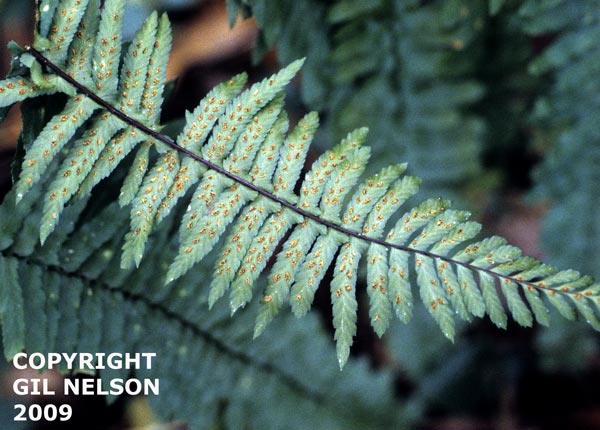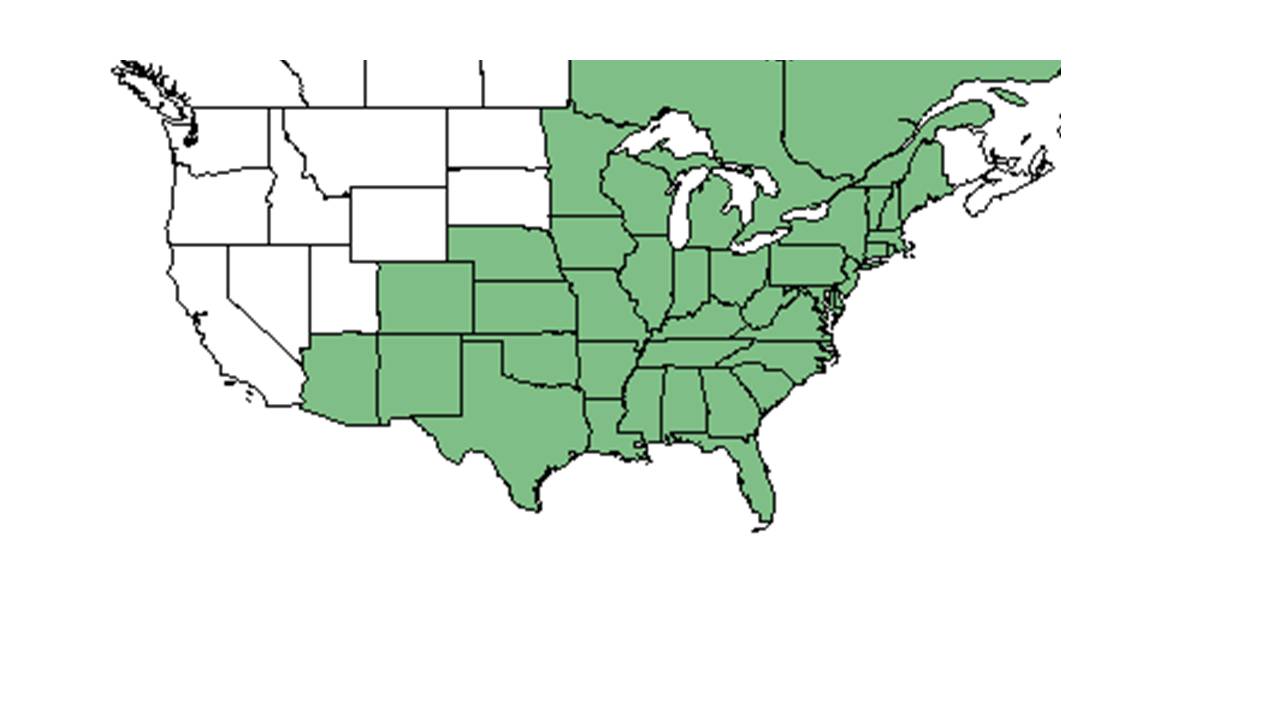Difference between revisions of "Asplenium platyneuron"
(→Photo Gallery) |
|||
| Line 19: | Line 19: | ||
Common Name: Ebony Spleenwort | Common Name: Ebony Spleenwort | ||
==Taxonomic notes== | ==Taxonomic notes== | ||
| + | Synonyms: ''Asplenium platyneuron'' var. ''platyneuron''; ''A. platyneuron'' var. ''bacculum-rubrum'' (Featherman) Fernald; ''A. platyneuron'' var. ''incisum'' (Howe ex Peck) B.L. | ||
==Description== | ==Description== | ||
<!-- Basic life history facts such as annual/perrenial, monoecious/dioecious, root morphology, seed type, etc. --> | <!-- Basic life history facts such as annual/perrenial, monoecious/dioecious, root morphology, seed type, etc. --> | ||
| Line 25: | Line 26: | ||
==Distribution== | ==Distribution== | ||
==Ecology== | ==Ecology== | ||
| − | ===Habitat=== | + | ===Habitat=== |
| − | |||
This species has been found growing in swamps, marshes, crotches of hardwood trees, and savannas (FSU Herbarium). It also grows in disturbed areas such as fallow fields and near field edges (FSU Herbarium). It does well in moist, loamy sand in fully shaded environments to areas with full sun (FSU Herbarium). | This species has been found growing in swamps, marshes, crotches of hardwood trees, and savannas (FSU Herbarium). It also grows in disturbed areas such as fallow fields and near field edges (FSU Herbarium). It does well in moist, loamy sand in fully shaded environments to areas with full sun (FSU Herbarium). | ||
Associated species include cypress, moss, magnolia, oak, and beech (FSU Herbarium). | Associated species include cypress, moss, magnolia, oak, and beech (FSU Herbarium). | ||
| − | ===Phenology=== <!-- | + | <!--===Phenology===--> |
| − | ===Seed dispersal=== | + | <!--===Seed dispersal===--> |
| − | ===Seed bank and germination=== | + | <!--===Seed bank and germination===--> |
| − | ===Fire ecology=== | + | ===Fire ecology=== |
| − | |||
It does well in fire dependent environments (FSU Herbarium) | It does well in fire dependent environments (FSU Herbarium) | ||
| − | ===Pollination=== | + | <!--===Pollination=== --> |
| − | ===Use by animals=== <!-- | + | ===Use by animals===--> |
| − | ===Diseases and parasites=== | + | <!--===Diseases and parasites===--> |
==Conservation and Management== | ==Conservation and Management== | ||
==Cultivation and restoration== | ==Cultivation and restoration== | ||
Revision as of 12:37, 29 February 2016
| Asplenium platyneuron | |
|---|---|

| |
| photo by Gil Nelson | |
| Scientific classification | |
| Kingdom: | Plantae |
| Division: | Pteridophyta - Ferns |
| Class: | Filicopsida |
| Order: | Polypodiales |
| Family: | Acanthaceae |
| Genus: | Asplenium |
| Species: | A. platyneuron |
| Binomial name | |
| Asplenium platyneuron (L.) Britton, Sterns & Poggenb. | |

| |
| Natural range of Asplenium platyneuron from USDA NRCS Plants Database. | |
Common Name: Ebony Spleenwort
Contents
Taxonomic notes
Synonyms: Asplenium platyneuron var. platyneuron; A. platyneuron var. bacculum-rubrum (Featherman) Fernald; A. platyneuron var. incisum (Howe ex Peck) B.L.
Description
A description of Asplenium platyneuron is provided in The Flora of North America.
Distribution
Ecology
Habitat
This species has been found growing in swamps, marshes, crotches of hardwood trees, and savannas (FSU Herbarium). It also grows in disturbed areas such as fallow fields and near field edges (FSU Herbarium). It does well in moist, loamy sand in fully shaded environments to areas with full sun (FSU Herbarium).
Associated species include cypress, moss, magnolia, oak, and beech (FSU Herbarium).
Fire ecology
It does well in fire dependent environments (FSU Herbarium)
===Use by animals===-->
Conservation and Management
Cultivation and restoration
Photo Gallery
References and notes
Florida State University Robert K. Godfrey Herbarium database. URL: http://herbarium.bio.fsu.edu. Last accessed: June 2014. Collectors: Loran C. Anderson, Karen MacClendon, R.K. Godfrey, Wilson Baker, R. F. Doren, Roy Komarek, and Jeffrey M. Kane. States and Counties: Florida: Wakulla, Calhoun, Franklin, Leon, and Gadsden. Georgia: Grady and Thomas.